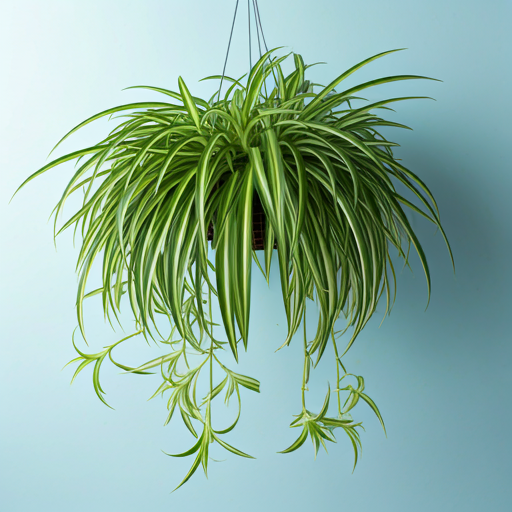
Codes and Commands | Journal | How To Articles

Spider plants, with their graceful arching leaves and charming spiderettes, are a popular choice for both novice and experienced plant enthusiasts. They are relatively low-maintenance and can thrive in a variety of indoor conditions. Here's a comprehensive guide to caring for your spider plant:
Spider plants are adaptable to various light conditions, but they prefer bright, indirect light. A north-facing window is ideal, as it provides consistent, gentle light. However, they can also tolerate lower light levels, though growth may slow down. Avoid placing your spider plant in direct sunlight, as this can scorch the leaves.
Proper watering is crucial for the health of your spider plant. As a general rule, allow the top inch of soil to dry out between waterings. Overwatering is a common mistake that can lead to root rot. To water your plant, thoroughly soak the soil until water drains from the bottom of the pot. Discard any excess water in the saucer to prevent soggy roots.
Spider plants prefer moderate to high humidity levels. To increase humidity around your plant, you can use the following methods:
Spider plants thrive in average room temperatures between 65°F and 80°F (18°C and 27°C). They can tolerate slightly cooler temperatures, but avoid exposing them to drafts or cold temperatures, as this can damage the leaves.
A well-draining potting mix is essential for spider plants. You can use a commercial potting mix designed for houseplants or create your own by combining equal parts potting soil, peat moss, and perlite. Ensure the pot has drainage holes to prevent waterlogging.
Spider plants are relatively low-maintenance and don't require frequent fertilizing. During the growing season (spring and summer), you can feed your plant with a balanced liquid fertilizer diluted to half strength every 4-6 weeks. Avoid fertilizing during the winter months when the plant is dormant.
Pruning your spider plant can help maintain its shape and encourage bushier growth. You can trim away any yellowing or damaged leaves using clean, sharp scissors. Additionally, you can remove spiderettes to propagate new plants.
Spider plants are easy to propagate through their spiderettes. Here's how to propagate your spider plant:
Spider plants are generally resistant to pests and diseases, but they can sometimes be affected by the following:
By following these simple care tips, you can enjoy the beauty of your spider plant for years to come. With its graceful appearance and low-maintenance nature, the spider plant is a wonderful addition to any home or office.